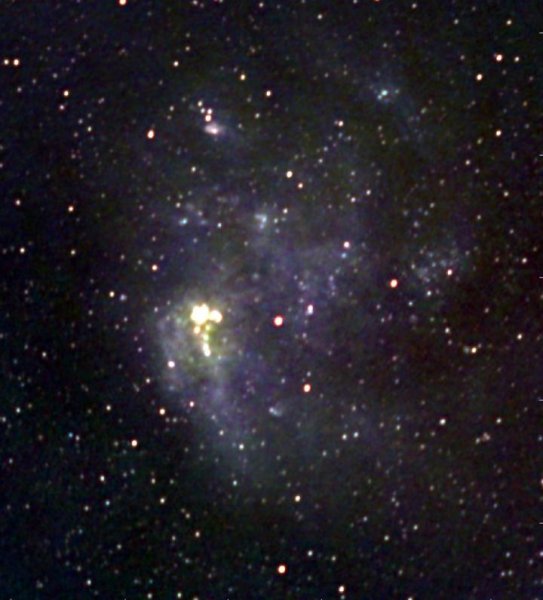Inbox and Environment News: Issue 375
September 9 - 15, 2018: Issue 375
Japan Killing Whales In Antarctic Protected Area
September 4, 2018: WWFJapanese whalers have killed more than 50 minke whales this year in the Ross Sea Marine Protected Area (MPA) in Antarctica, WWF revealed today on the opening day of the International Whaling Commission (IWC) meeting in Brazil.
Harvesting krill and fishing is banned in the Ross Sea MPA special protection zone, yet Japan is able to conduct whaling in this unique natural area through a “scientific whaling” loophole. WWF is calling on the IWC and the Commission for the Conservation of Antarctic Marine Living Resources (CCAMLR) to work together with the Japanese government to close this loophole and end the killing of whales in the Ross Sea MPA and the wider Southern Ocean sanctuary.
Chris Johnson, Senior Manager, WWF Antarctic Program said “The Ross Sea MPA is supposed to have special protection from human activities to safeguard a wealth of Antarctic wildlife. People around the world who celebrated this historic ocean sanctuary will be shocked by the killing of whales within its boundaries. Only the IWC can close the loophole that enables whales to be harpooned in a protected area. CCAMLR needs to step up and take a role in working closer with IWC to ensure that happens. It is a travesty that Japan can go into an ocean sanctuary and harpoon whales. “
The Ross Sea MPA, one of the world’s largest protected areas covering 1.55 million sq km, was agreed by CCAMLR in 2016. The Commission is made up of 24-member states including Japan, and the EU. The MPA helps to protect many of the thousands of species that live in the Southern Ocean including Antarctic krill, emperor penguins, Weddell seals and a range of whale species including blue, humpback, minke and killer whales.
But CCAMLR does not control whaling in the region – instead, any member country of the IWC can grant itself a special permit to whale. On the 31st March 2014, the International Court of Justice ruled that Japan should revoke all existing permits for ‘scientific whaling’ in the Southern Ocean and refrain from granting any further permits. Japan simply issued itself a new special permit called NewRep-A which leads to the killing of 333 Antarctic minke whales each year in the Southern Ocean until 2027.
WWF discovered Japan’s five week killing spree through protected waters by analysing an IWC scientific committee paper*. The map below shows Japan’s whaling activity in the General Protection Zone (GPZ) of the Ross Sea MPA, between 22 January and 28 February 2018, just 2 months after the Ross Sea MPA came into force.
Inside this zone all fishing activity is restricted to protect habitats that are important to native marine mammals, birds, fish and invertebrates. Red dots show the sighting positions of Antarctic minke whales before they were killed. The lines are the search paths of three Japanese whaling ships.
WWF collaborates with researchers designing and implementing non-lethal ways to study whales. Early this year, the first-ever ‘whale cam’ was deployed on an Antarctic minke whale by Dr Ari Friedlaender and WWF to study their feeding behaviour. *The data is from the IWC SC Report SC/67b/SCSP/08 entitled “Results of the third biological field survey of NEWREP-A during the 2017/18 Austral summer season.”
Australia Will Continue To Oppose Japan's Resume Whaling Agenda
Assistant Minister for International Development and the Pacific Senator Anne Ruston will attend the International Whaling Commission meeting in Brazil this weekend.
"Australia will continue to oppose any efforts to overturn the global moratorium on commercial whaling and will call on like-minded nations to join us in rejecting any proposal to allow commercial whaling," Senator Ruston said in a statement on Friday.
"We will also oppose any attempts to weaken the commission's decision-making rules or establish catch-limits for commercial whaling."
The Japan Fisheries Agency wants an end to the whaling moratorium and for new commercial whaling quotas to be established by 2020.
Aboriginal subsistence whaling, governance reform, special permit whaling and the establishment of a South Atlantic whale sanctuary are also on the agenda for the meeting.
The Australian Marine Conservation Society has members also going to the IWC Meeting and released the blow MR on Friday, September 7th;
Japan Pushes To End Global Ban On Whaling As IWC Meeting Begins
Fri 7 September 2018When the 67th meeting of the International Whaling Commission (IWC) begins in Brazil on Monday 10 September the Japanese Government will be pushing for an end to the global moratorium on whaling, and for new commercial whaling quotas to be established by 2020.
“Whaling is a cruel, outdated and unnecessary industry that belongs in the past. It is outrageous that Japan is urging the IWC to lift the ban on commercial whaling and drag us back to the bad old days of global whaling”, said Tooni Mahto Campaigns Manager with the Australian Marine Conservation Society.
“Whales face a greater number of threats today that at any stage in their past. Climate change, entanglement in fishing nets, plastic pollution, underwater noise and ship strikes threaten our ocean giants.
“Our whales need help, not harpoons.”
Under the Government of Japan’s ‘Way Forward’ proposal to reform the IWC, Japan is also pushing for changes to the IWC’s voting rules so that decisions like the setting of whaling quotas can be made by a simple majority, rather than the current three quarters majority.
“Japan doesn’t like the decisions the IWC has been making so they’re trying to change the rules to make it easier to hunt whales. This isn’t the way forwards it is the way backwards.
“The Australian Government is speaking out against Japan’s plans but many countries have been deafeningly silent, and silence will spell the end for the 30 year ban on commercial whaling.
“Australia has been a global leader in whale conservation since the Fraser government banned whaling in 1979. Australia took and won the landmark legal case against Japan in 2014. Australia must once again stand tallest for the whales when the IWC meets in Brazil.
“Australia must lead the charge to save the ban on whaling. Japan must not succeed in changing the voting rules or bringing the return of commercial whaling.”
The IWC meeting will also be considering important measures for strengthening whale conservation.
“We need to protect whales now more than ever. The IWC needs to be the champion of and driving force behind whale conservation.
“This meeting must see the creation of a new global whale sanctuary in the South Atlantic. This meeting must see decisive action for critically endangered species and to tackle growing threats like bycatch and entanglement in ghost nets,” concluded Mahto.
AMCS will be attending the meeting. The 87 nation IWC meets every two years. The full Commission meeting takes place in Florianopolis, Brazil 10-14 September.
Breeding Season For Pittwater's Wildlife
This Royal Spoonbill spotted Friday morning in Careel Creek displays the signs of being in its breeding season.
The Royal Spoonbill (Platalea regiais) is a large white waterbird with black, spatulate (spoon-shaped) bill, facial skin, legs and feet. During the breeding season, it has a distinctive nuchal (back of head or nape of neck) crest, which can be up to 20 cm long in male birds (usually shorter in females). The crest can be erected during mating displays to reveal bright pink skin underneath. Breeding adults also have a creamy-yellow wash across the lower neck and upper breast and a strip of bright pink skin along the edge of the underwings which is obvious when the bird opens its wings. The facial skin is black with a yellow patch above the eye and a red patch in the middle of the forehead, in front of the crest feathers.
Be great if we could all be a bit mindful that we live in an environment populated with other animals of the furred, feathered and scaled kind this season and give them a bit of space and respect.
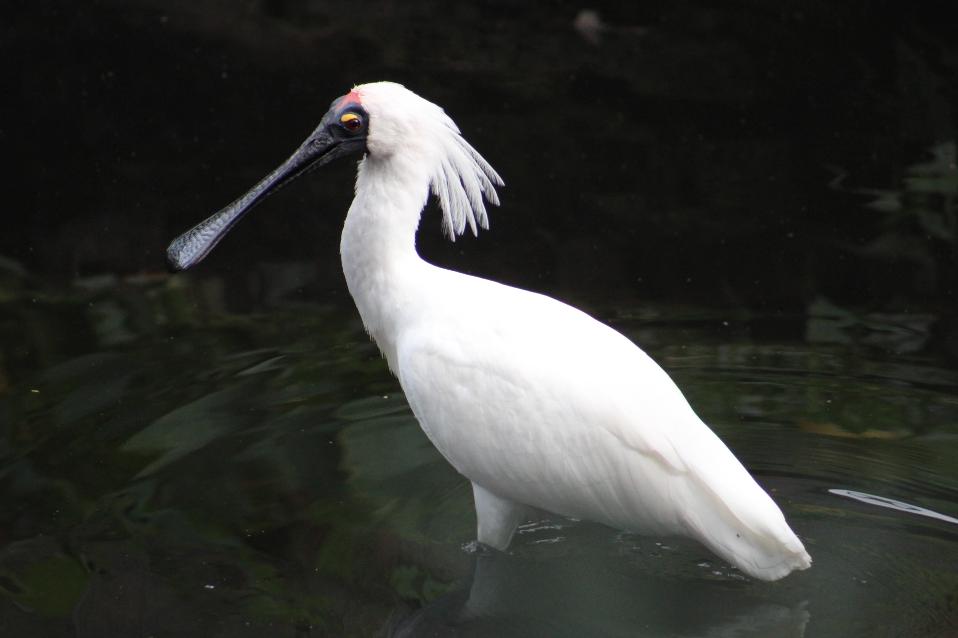
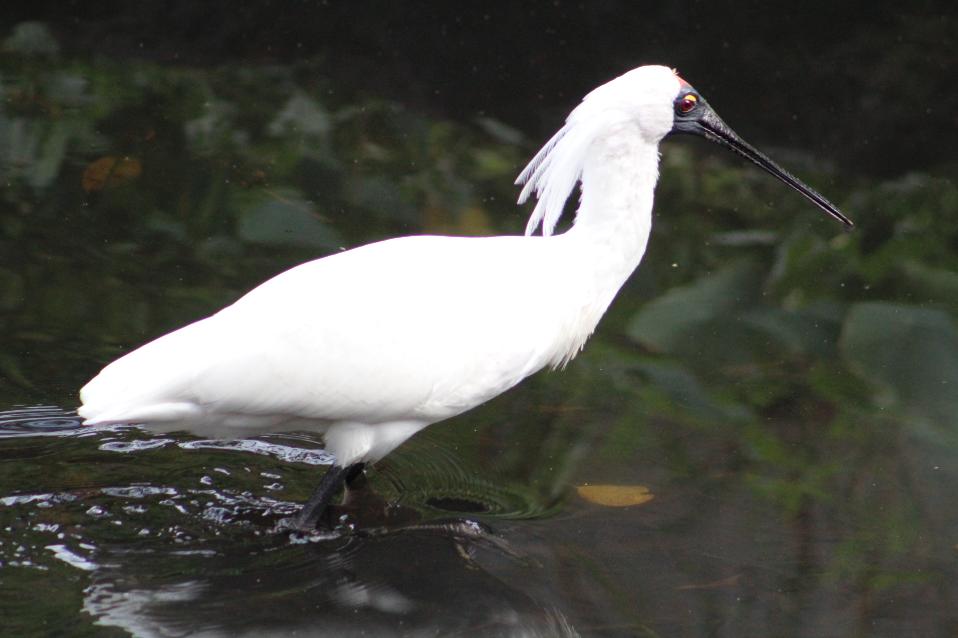 Also, a White-faced Heron(Egretta novaehollandiae) fishing on the beach rockshelf.
Also, a White-faced Heron(Egretta novaehollandiae) fishing on the beach rockshelf.
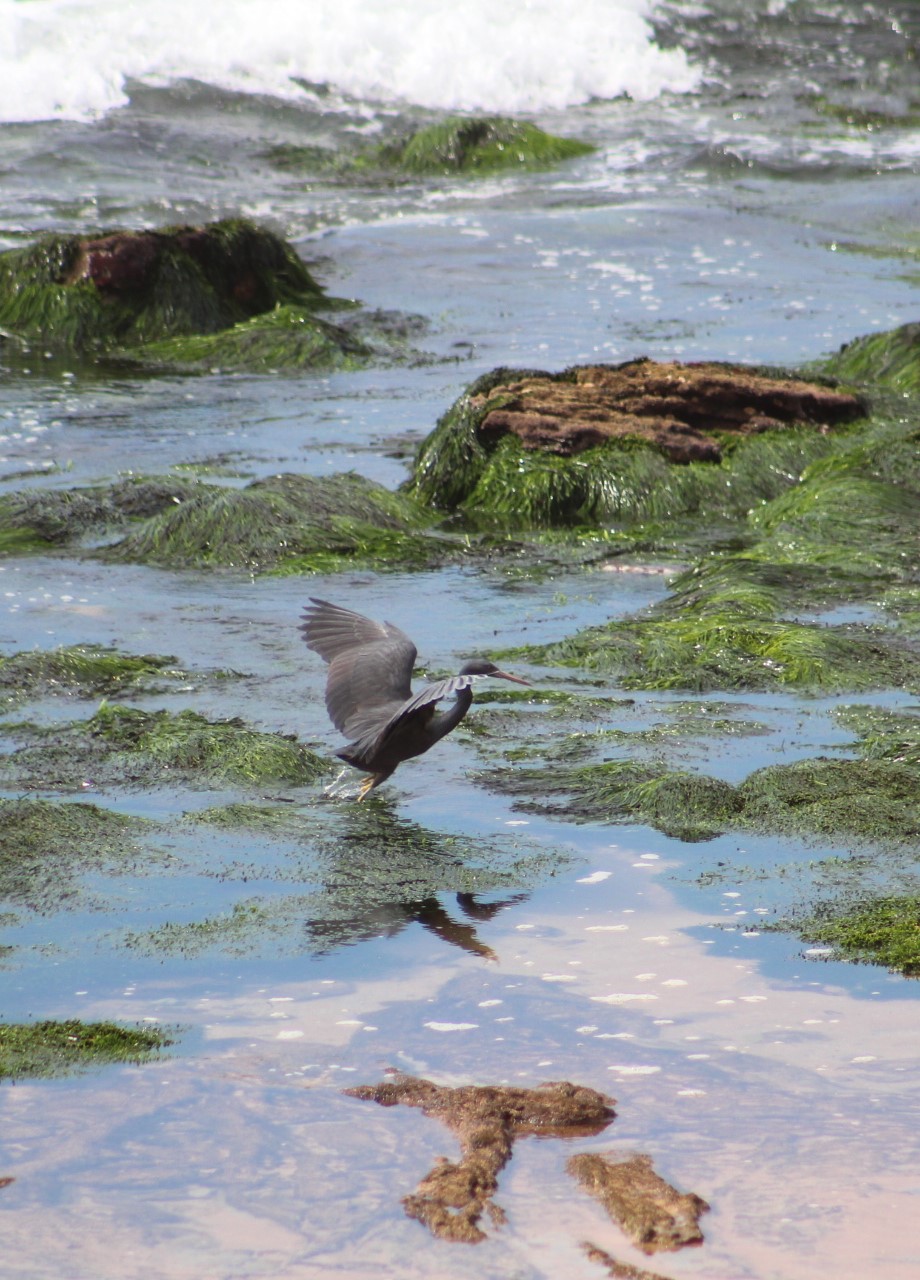
This Royal Spoonbill spotted Friday morning in Careel Creek displays the signs of being in its breeding season.
The Royal Spoonbill (Platalea regiais) is a large white waterbird with black, spatulate (spoon-shaped) bill, facial skin, legs and feet. During the breeding season, it has a distinctive nuchal (back of head or nape of neck) crest, which can be up to 20 cm long in male birds (usually shorter in females). The crest can be erected during mating displays to reveal bright pink skin underneath. Breeding adults also have a creamy-yellow wash across the lower neck and upper breast and a strip of bright pink skin along the edge of the underwings which is obvious when the bird opens its wings. The facial skin is black with a yellow patch above the eye and a red patch in the middle of the forehead, in front of the crest feathers.
Be great if we could all be a bit mindful that we live in an environment populated with other animals of the furred, feathered and scaled kind this season and give them a bit of space and respect.



Flowering In Pittwater: First Week Of Spring 2018
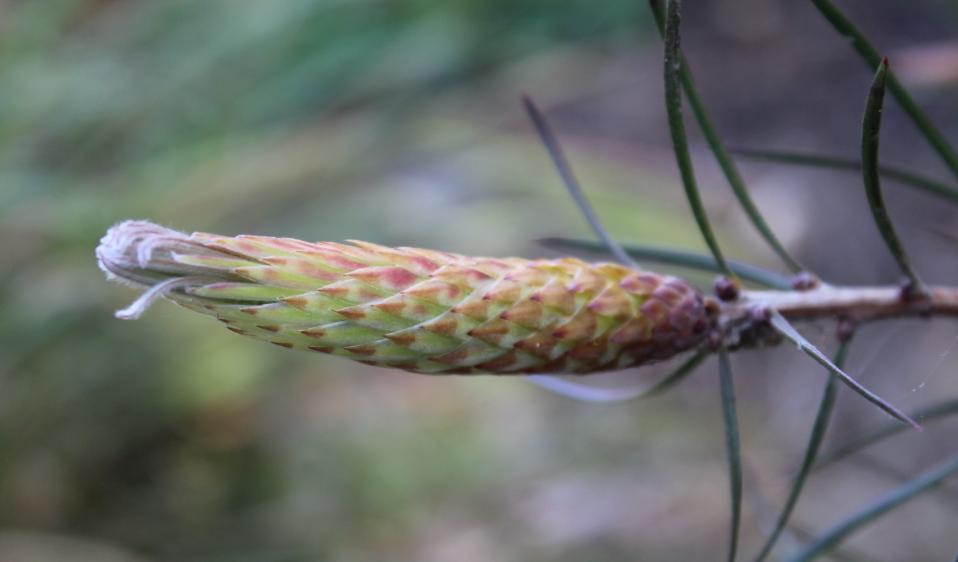
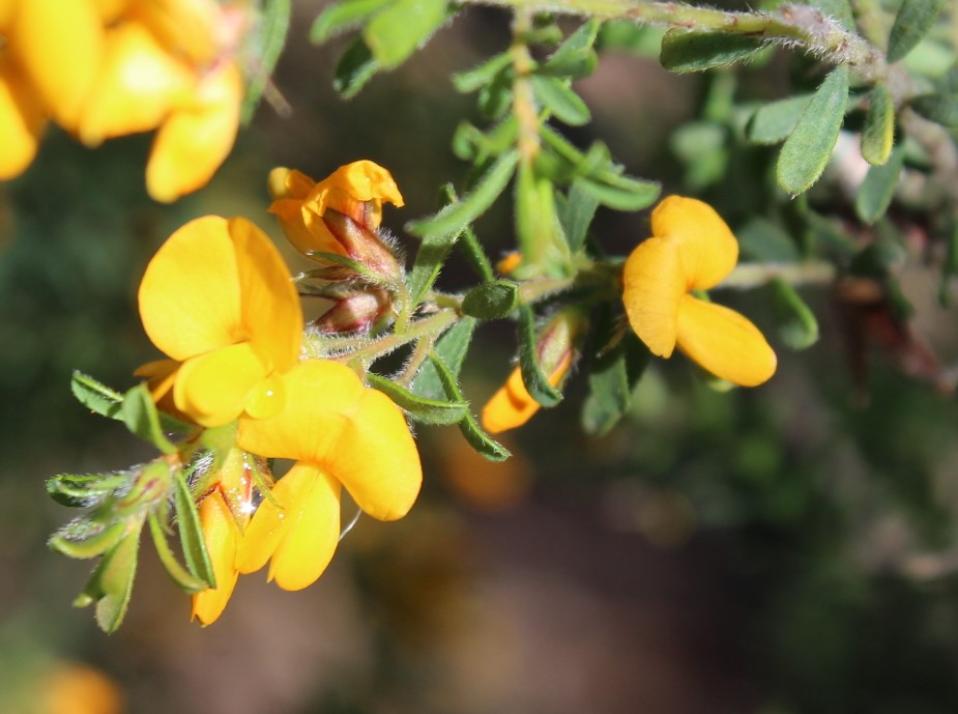
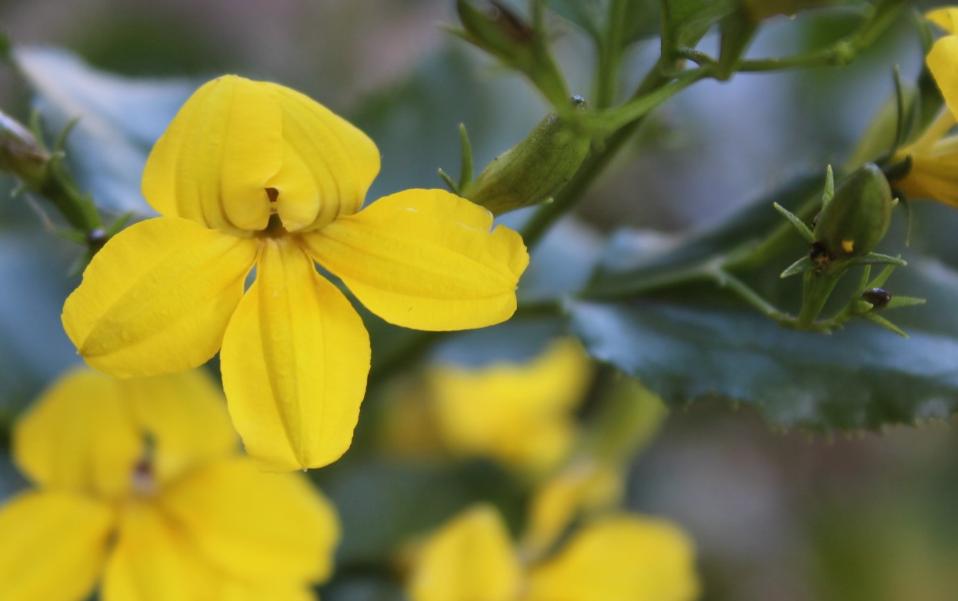
$100,000 Secured For Rehabilitation Of Curl Curl Lagoon
Thursday, 6 September 2018Member for Manly James Griffin has today announced $100,000 in funding will be provided by the NSW Government to the Northern Beaches Council for their Restoring Pride in Curl Curl Lagoon project. The project will protect, restore and enhance the local environment at North Curl Curl.
Mr Griffin congratulated the Northern Beaches Council for successfully securing the funds under the 2017/18 round of the NSW Environmental Trust’s Restoration and Rehabilitation Grant Program, saying their project would result in significant environmental benefits for the local community.
“Cleaning up Curl Curl Lagoon was one of my key priorities when I was elected in 2017 and I am delighted to be partnering with Council and Curl Curl Lagoon Friends on the restoration and rehabilitation of the lagoon,” Mr Griffin said.
“Removal of weeds and planting of native vegetation on the lagoon’s northern bank will provide better habitat for fish and birds and provide a better corridor for the movement of native fauna.”
“$100,000 is a significant portion of the funding required for the completion of this important rehabilitation project.”
46 community groups and government entities across NSW were successful in sharing a proportion of more than $4 million of funding, to undertake projects that protect, restore and enhance the environment.
Northern Beaches Mayor Michael Regan said Council welcomed the grant funding.
“Extensive rehabilitation has been undertaken over the years to make this valuable recreational asset what it is today, but given its legacy it requires ongoing work to maintain this little gem right at our doorstep,” Mayor Regan said.
“We welcome this significant grant, highlighting the importance of local and state government working together to achieve the best for our community and our environment.”
NSW Environment Minister Gabrielle Upton said the 2018 Restoration and Rehabilitation Grant Program had awarded 21 grants to community groups and 25 grants to government entities for a range of habitat and ecosystem restoration projects.
Mr Griffin and Cr Regan congratulated Curl Curl Lagoon Friends who have been advocating for a cleaner, safer lagoon for almost 40 years and are actively involved in the bush regeneration conducted along the lagoon on the first and third Sat of each month.
“I want to thank the Curl Curl Lagoon Friends and their army of volunteers for their ongoing support for this vital environmental asset, and I will continue to advocate alongside them to see this project completed,” Mr Griffin said.
Paula Cowan, President of Curl Curl Lagoon Friends, said the Friends are grateful for the support from both the Northern Beaches Council and NSW Government.
"Curl Curl Lagoon Friends is buoyed by the support from James Griffin, the Northern Beaches Council and the Environmental Trust. It is incredibly exciting to have this opportunity to involve locals in restoring this precious ecosystem,” Ms Cowan said.
"It is critical to maintain local pride in the lagoon and surrounds as a focal point of our suburb. Complete rehabilitation of the waterway is several decades away and we believe enhancing and preserving the ecosystem during this time will ensure that the lagoon retains its value to the community."
Curl Curl Lagoon Friends meet at Alan Newton Reserve on the 1st and 3rd Saturdays of the month between 9am and 11am for bush regeneration, as well at the Park Street bridge in John Fisher Park at 7:30am on the last Friday of the month for the bird count project in conjunction with Northern Beaches Council.
The Annual General Meeting for the Curl Curl Lagoon Friends will be held on the 24th of October at Curl Curl North Public School from 7pm.
For more details on the grant program and project descriptions visit:
To get involved with Curl Curl Lagoon Friends:New helpers are always welcome - just come along to Alan Newton reserve on the first and third Saturday of every month.
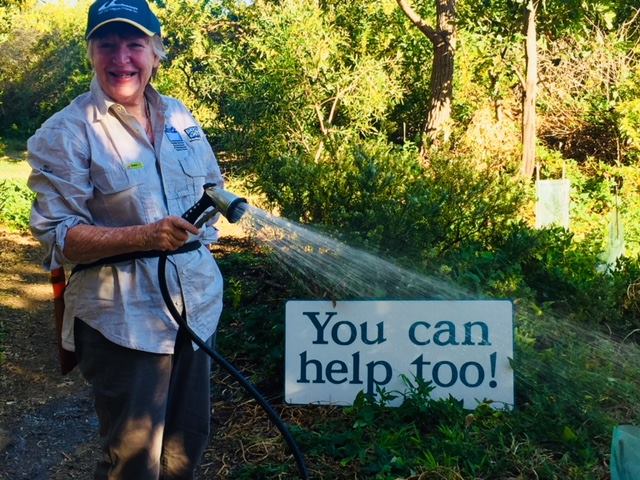
Curl Curl Lagoon FriendsAugust 27,2o18Great turnout once again for Northern Beaches Clean Up Crew's clean up on Sunday. Thanks to everyone who came! We look forward to hearing about the amazing work of the founder of the Northern Beaches Clean Up Crew, Malin Frick at our forthcoming AGM on 24th October. Put it in your diary now!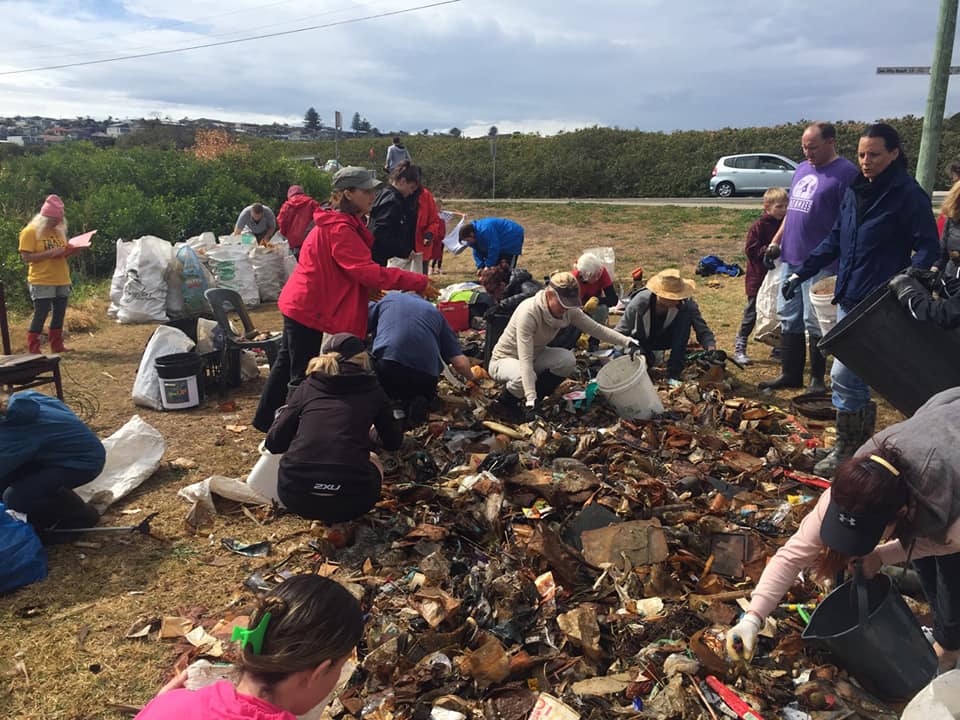


Special Footage – Brown Treecreepers Using A Nest Box
September 4th, 2018: by BIBY TVThese Brown Treecreepers (eastern subspecies Climacteris picumnus victoriae, listed as Vulnerable in NSW) were filmed in late August 2018 at a private property in the Capertee Valley, NSW. The site was once part of a working farm (which included grazing and logging for domestic use), but since 1994 has undergone habitat restoration (e.g. tree-planting, weed control, retention of existing living and dead trees, tree stumps and fallen timber). The only grazing is now done by various macropods and wombats. Brown Treecreepers can be seen across most of the property (i.e. natural and replaced woodland areas, open forest and grassland close to trees), where they spend about half of their foraging time on or close to the ground (e.g. probing leaf litter, decaying logs and stumps for insects and larvae). They also explore the bark and crevices of standing eucalypts. The second photo hints at the habitat available on this site and is close to where the treecreepers were filmed. To see a little more of the location and some of its birds go to https://youtu.be/a6qM_bl-AnA
A casual perusal of the property reveals many possible nesting/roosting sites for hollow-dependant fauna, including holes/cavities in living and dead trees (trunks and branches), large old tree stumps and ground timber, as well as partially elevated logs with artificial hollows. Despite this – or could it be, because of this (habitat quality)? – Brown Treecreepers were observed visiting one of seven nest boxes attached to supporting pillars of an open-sided carport. Perhaps unsurprisingly, the one they have chosen is the only one with a bark front. All the rest have the usual smooth wood, albeit with protruding perch. Clearly the bark enables the treecreepers to cling to the box as they would in nature. But the exterior is just one of many factors (e.g. height from ground, size of entry, size of internal space and orientation) that contribute to a good nesting location. It could simply be that this box “ticked all the boxes” in real estate terms. Note too the protection from the rain.
What’s particularly interesting though is the very limited usage of nest boxes by Brown Treecreepers when they have been provided elsewhere to offset the loss of trees (with hollows) for a road widening. To read more about this go to theconversation.com/the-plan-... It’s possible that the overall quality of the Capertee Valley property allows the Brown Treecreepers to thrive generally and thus any suitable nesting site has some chance of being chosen.
The other unusual aspect of this footage is the presence of two females (see rufous marks on upper breast). Brown Treecreeper breeding pairs are usually assisted by previous male offspring. It’s possible a male “helper” was also around, but without photos of every individual it’s hard to judge. To make sure they weren’t disturbed, still pictures were mostly avoided due to shutter sound. Moreover, the camera operator was completely hidden in a small portable bird hide across two filming sessions (one per day). Earlier observations from the distance indicated that their behaviour during filming was normal. At the very least we saw three treecreepers, presumably the breeding pair and the female helper. One female spent a lot of time inside the box while the male (with black and white “freckles” on upper breast) and other female brought her food. There were also a few instances of nest material being placed in the box. Hence it’s not clear whether the female was incubating eggs (with extra nesting material as a “reno”) or preparing to do so. Occasionally the female in situ would pop outside to look around or take food or she flew off for a short time.
The biggest threat to Brown Treecreepers and other woodland birds is habitat loss, degradation and fragmentation.
Blue-Green Algae Promises To Help Boost Food Crop Yields
September 4th, 2018: Australian National University
Scientists at The Australian National University (ANU) have engineered tiny carbon-capturing engines from blue-green algae into plants, in a breakthrough that promises to help boost the yields of important food crops such as wheat, cowpeas and cassava.
Lead researcher Dr Ben Long from ANU said the discovery was a major leap forward in improving the way crops convert carbon dioxide, water and sunlight into energy -- a process called photosynthesis, which is one of the main limitations to crop yield.
"For the first time, we have inserted tiny compartments from cyanobacteria -- commonly known as blue-green algae -- into crop plants that form part of a system that could lead to a 60 per cent increase in plant growth and yield," said Dr Ben Long from the ANU Research School of Biology whose work has been funded by the international Realizing Increased Photosynthetic Efficiency (RIPE) consortium.
These compartments, called carboxysomes, are responsible for making cyanobacteria so efficient at transforming carbon dioxide into energy-rich sugars.
"Until now, inserting a carboxysome into a plant had been in the realm of science fiction and it has taken us more than five years to get to this point," Dr Long said.
"We are trying to insert a turbo-charged carbon-capturing engine into plants, by mimicking a solution that cyanobacteria -- the ancestors of modern plant chloroplasts, the green compartments where plants make their own food -- found millions of years ago."
Rubisco, the enzyme responsible for fixing carbon dioxide from the atmosphere, is slow and finds it difficult to differentiate between carbon dioxide and oxygen, leading to wasteful energy loss.
"Unlike crop plants, cyanobacteria use what's called a 'CO2 concentrating mechanism' to deliver large amounts of the gas into their carboxysomes, where their Rubisco is encapsulated," Dr Long said.
"This mechanism increases the speed in which CO2 can be turned into sugar and minimises reactions with oxygen."
The Rubisco enzyme inside cyanobacteria can capture carbon dioxide and generate sugars about three times faster than the Rubisco found in plants.
Computer models have shown that upgrading plant photosynthesis to use this mechanism will lead to a dramatic increase in plant growth and yield.
"We still have a lot of work to do, but achieving this in tobacco plants was an absolute essential step that has shown us we can expect to see crops with functional CO2 concentrating mechanisms in the future, producing higher yield," Dr Long said.
Co-researcher Professor Dean Price from the ANU Research School of Biology said the discovery offered a promising long-term strategy to enhance global crop yields and environmental resilience.
"We need every creative effort to improve crop yields if we want to be able to feed the growing global population and these options take time, so we need to do it now," said Professor Price, who is a Chief Investigator with the RIPE consortium and the Australian Research Council (ARC) Centre of Excellence for Translational Photosynthesis.
RIPE Director Stephen Long, Ikenberry Endowed University Chair of Crop Sciences and Plant Biology at the University of Illinois, welcomed the discovery.
"When we supported this research, starting five years ago, we knew this was very high risk, but went ahead given the very great rewards it could lead to," he said.
"We never expected to see carboxysomes in the crop chloroplast by this stage, maybe just pieces.
"So by assembling carboxysomes indistinguishable from those of cyanobacteria is a spectacular achievement, and puts us well on the road to be able to achieve the full system."
Benedict M. Long, Wei Yih Hee, Robert E. Sharwood, Benjamin D. Rae, Sarah Kaines, Yi-Leen Lim, Nghiem D. Nguyen, Baxter Massey, Soumi Bala, Susanne von Caemmerer, Murray R. Badger, G. Dean Price. Carboxysome encapsulation of the CO2-fixing enzyme Rubisco in tobacco chloroplasts. Nature Communications, 2018; 9 (1) DOI: 10.1038/s41467-018-06044-0
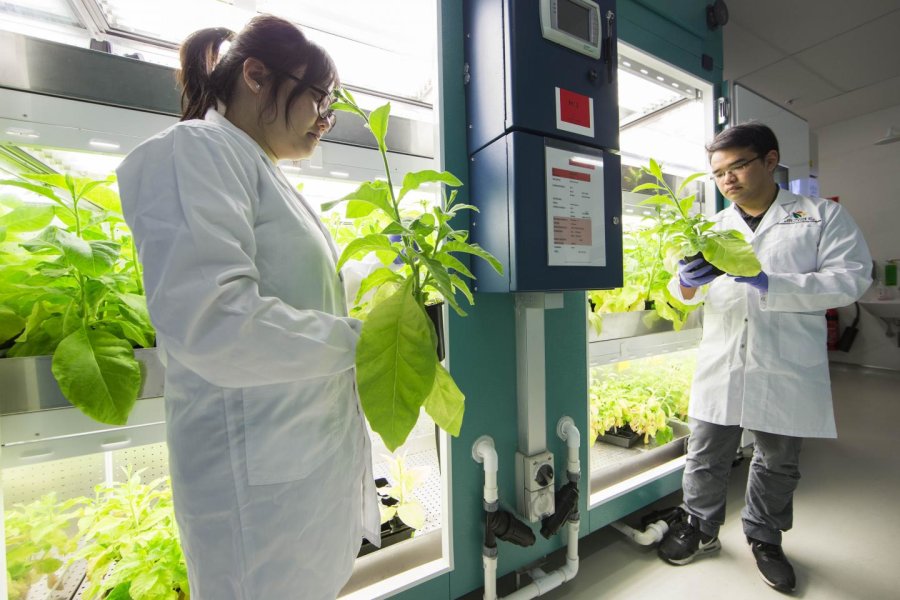
Researchers Eng Kee Au and Nghiem D. Nguyen from the ARC Centre of Excellence in translational photosynthesis at ANU inspect tobacco plants as part of their development of new techniques for improving photosynthesis in crops such as wheat, cowpeas and cassava. Credit: The Australian National University
September 4th, 2018: Australian National University
Scientists at The Australian National University (ANU) have engineered tiny carbon-capturing engines from blue-green algae into plants, in a breakthrough that promises to help boost the yields of important food crops such as wheat, cowpeas and cassava.
Lead researcher Dr Ben Long from ANU said the discovery was a major leap forward in improving the way crops convert carbon dioxide, water and sunlight into energy -- a process called photosynthesis, which is one of the main limitations to crop yield.
"For the first time, we have inserted tiny compartments from cyanobacteria -- commonly known as blue-green algae -- into crop plants that form part of a system that could lead to a 60 per cent increase in plant growth and yield," said Dr Ben Long from the ANU Research School of Biology whose work has been funded by the international Realizing Increased Photosynthetic Efficiency (RIPE) consortium.
These compartments, called carboxysomes, are responsible for making cyanobacteria so efficient at transforming carbon dioxide into energy-rich sugars.
"Until now, inserting a carboxysome into a plant had been in the realm of science fiction and it has taken us more than five years to get to this point," Dr Long said.
"We are trying to insert a turbo-charged carbon-capturing engine into plants, by mimicking a solution that cyanobacteria -- the ancestors of modern plant chloroplasts, the green compartments where plants make their own food -- found millions of years ago."
Rubisco, the enzyme responsible for fixing carbon dioxide from the atmosphere, is slow and finds it difficult to differentiate between carbon dioxide and oxygen, leading to wasteful energy loss.
"Unlike crop plants, cyanobacteria use what's called a 'CO2 concentrating mechanism' to deliver large amounts of the gas into their carboxysomes, where their Rubisco is encapsulated," Dr Long said.
"This mechanism increases the speed in which CO2 can be turned into sugar and minimises reactions with oxygen."
The Rubisco enzyme inside cyanobacteria can capture carbon dioxide and generate sugars about three times faster than the Rubisco found in plants.
Computer models have shown that upgrading plant photosynthesis to use this mechanism will lead to a dramatic increase in plant growth and yield.
"We still have a lot of work to do, but achieving this in tobacco plants was an absolute essential step that has shown us we can expect to see crops with functional CO2 concentrating mechanisms in the future, producing higher yield," Dr Long said.
Co-researcher Professor Dean Price from the ANU Research School of Biology said the discovery offered a promising long-term strategy to enhance global crop yields and environmental resilience.
"We need every creative effort to improve crop yields if we want to be able to feed the growing global population and these options take time, so we need to do it now," said Professor Price, who is a Chief Investigator with the RIPE consortium and the Australian Research Council (ARC) Centre of Excellence for Translational Photosynthesis.
RIPE Director Stephen Long, Ikenberry Endowed University Chair of Crop Sciences and Plant Biology at the University of Illinois, welcomed the discovery.
"When we supported this research, starting five years ago, we knew this was very high risk, but went ahead given the very great rewards it could lead to," he said.
"We never expected to see carboxysomes in the crop chloroplast by this stage, maybe just pieces.
"So by assembling carboxysomes indistinguishable from those of cyanobacteria is a spectacular achievement, and puts us well on the road to be able to achieve the full system."
Benedict M. Long, Wei Yih Hee, Robert E. Sharwood, Benjamin D. Rae, Sarah Kaines, Yi-Leen Lim, Nghiem D. Nguyen, Baxter Massey, Soumi Bala, Susanne von Caemmerer, Murray R. Badger, G. Dean Price. Carboxysome encapsulation of the CO2-fixing enzyme Rubisco in tobacco chloroplasts. Nature Communications, 2018; 9 (1) DOI: 10.1038/s41467-018-06044-0

Researchers Eng Kee Au and Nghiem D. Nguyen from the ARC Centre of Excellence in translational photosynthesis at ANU inspect tobacco plants as part of their development of new techniques for improving photosynthesis in crops such as wheat, cowpeas and cassava. Credit: The Australian National University
A Breakthrough For Australia's Fish
September 4th, 2018: University of Queensland
A research team from the Threatened Species Recovery Hub has made a breakthrough that could help dwindling numbers of Australian freshwater fish species.
Dr Jabin Watson from the University of Queensland says the innovation will allow small and young fish to get past barriers like culverts.
"Simple things like dams, culverts and weirs can be enough to prevent fish from migrating, accessing habitat and even escaping predators," said Dr Watson.
"These kinds of barriers are a major contributor to the declines and local extinctions of many Australian fish species."
Native fish in the Murray Darling Basin are estimated to be at only ten per cent of pre European numbers.
"When streams pass through a culvert -- the pipes under most roads -- the flow is concentrated," Dr Watson said.
"This fast flow can be impossible for many fish to navigate as they simply can't swim that fast for that long.
"Small and young fish are particularly impacted."
The team used a biohydrodynamics laboratory at UQ to test the swimming ability and behaviour of native fish species.
"Many different types of devices have been trialled in Australia to help fish move past barriers like culverts," Dr Watson said.
"Baffles are frequently used, with the aim of giving fish areas to rest along the way, but our laboratory testing has shown that the turbulence created can really knock fish about and make them disorientated.
"We've discovered a completely new approach that has proved very successful in laboratory trials, enabling small and young fish to navigate fast flows.
"We have taken advantage of a property of fluid mechanics called the boundary layer to create a channel of slower flowing water along one side of the culvert," he said.
"The boundary layer is a thin layer of slower water generated by a fluid moving across a solid surface, such as the bed and walls of a culvert.
"By adding a beam along the culvert wall, we have added another surface close to the culvert corner.
"The boundary layers from these three surfaces merge to create a reduced velocity channel that is large enough for small fish to swim through.
Dr Watson said no native fish species have evolved to cope with things like culverts.
"Strategies that work to improve fish passage provide hope for our freshwater species," Dr Watson concludes.
Jabin R. Watson, Harriet R. Goodrich, Rebecca L. Cramp, Matthew A. Gordos, Craig E. Franklin. Utilising the boundary layer to help restore the connectivity of fish habitats and populations. Ecological Engineering, 2018; 122: 286 DOI: 10.1016/j.ecoleng.2018.08.008
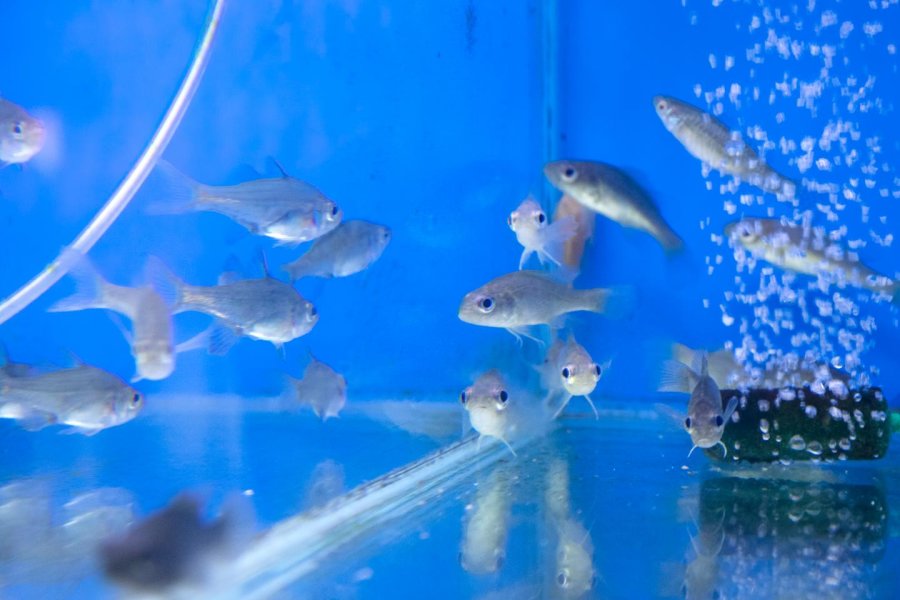
Native fish used to test the design. Credit: The University of Queensland
September 4th, 2018: University of Queensland
A research team from the Threatened Species Recovery Hub has made a breakthrough that could help dwindling numbers of Australian freshwater fish species.
Dr Jabin Watson from the University of Queensland says the innovation will allow small and young fish to get past barriers like culverts.
"Simple things like dams, culverts and weirs can be enough to prevent fish from migrating, accessing habitat and even escaping predators," said Dr Watson.
"These kinds of barriers are a major contributor to the declines and local extinctions of many Australian fish species."
Native fish in the Murray Darling Basin are estimated to be at only ten per cent of pre European numbers.
"When streams pass through a culvert -- the pipes under most roads -- the flow is concentrated," Dr Watson said.
"This fast flow can be impossible for many fish to navigate as they simply can't swim that fast for that long.
"Small and young fish are particularly impacted."
The team used a biohydrodynamics laboratory at UQ to test the swimming ability and behaviour of native fish species.
"Many different types of devices have been trialled in Australia to help fish move past barriers like culverts," Dr Watson said.
"Baffles are frequently used, with the aim of giving fish areas to rest along the way, but our laboratory testing has shown that the turbulence created can really knock fish about and make them disorientated.
"We've discovered a completely new approach that has proved very successful in laboratory trials, enabling small and young fish to navigate fast flows.
"We have taken advantage of a property of fluid mechanics called the boundary layer to create a channel of slower flowing water along one side of the culvert," he said.
"The boundary layer is a thin layer of slower water generated by a fluid moving across a solid surface, such as the bed and walls of a culvert.
"By adding a beam along the culvert wall, we have added another surface close to the culvert corner.
"The boundary layers from these three surfaces merge to create a reduced velocity channel that is large enough for small fish to swim through.
Dr Watson said no native fish species have evolved to cope with things like culverts.
"Strategies that work to improve fish passage provide hope for our freshwater species," Dr Watson concludes.
Jabin R. Watson, Harriet R. Goodrich, Rebecca L. Cramp, Matthew A. Gordos, Craig E. Franklin. Utilising the boundary layer to help restore the connectivity of fish habitats and populations. Ecological Engineering, 2018; 122: 286 DOI: 10.1016/j.ecoleng.2018.08.008

Native fish used to test the design. Credit: The University of Queensland
Community Planting Day At Careel Bay Fields
On Saturday September 15. Come and help plant local native tubestock and restore the degraded area adjacent to Barrenjoey Road and Careel Bay Dog Exercise area.
Meet at corner of Etival St and Barrenjoey Rd Avalon, 8.30am -12. This is an activity in our Careel Creek Vine Weeds control project. Tools, gloves, equipment, morning tea and friendly locals supplied.
Further information: please call the Bushland Management Officer on 9970 1363 or 0417 040 945
This project is supported by a Greater Sydney Local Land Services Grant through Pittwater Natural Heritage Association and Northern Beaches Council.
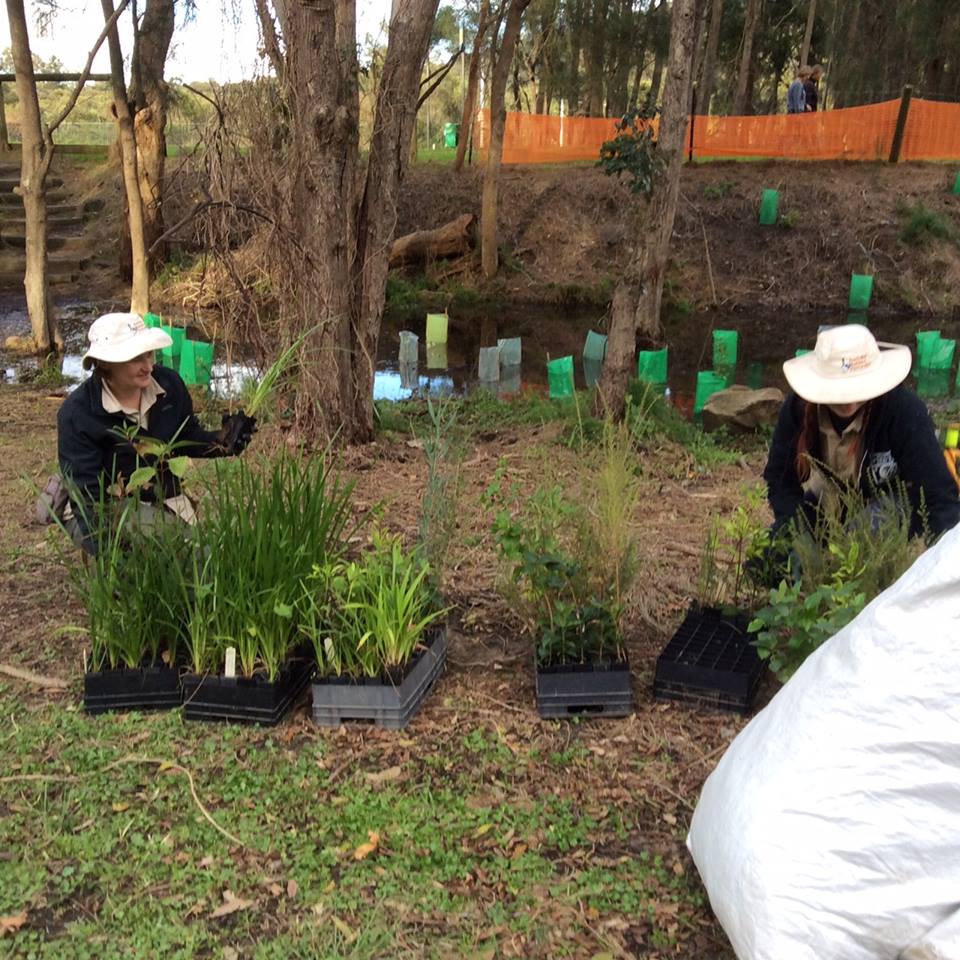

Green Globe Award Finalists Announced
September 3rd, 2018: NSW Office of Environment & HeritageYoung eco warriors, business leaders, social enterprises and long-time leaders of the environmental movement are all represented in the list of finalists for the 19th annual Green Globe Awards, announced today by Office of Environment and Heritage Chief Executive, Anthony Lean.
The diverse group of 40 finalists was selected from over 150 nominations representing a vast range of sectors, from all corners of the state and all walks of life.
“I’m proud to be involved in these awards which celebrate leadership, commitment and innovation in sustainability across NSW,” said Mr Lean.
“The 40 Green Globe Award finalists of 2018 bring environmental innovation to festivals and markets, community run renewable energy, data centres and office buildings, plastic recycling and sustainable packaging, agriculture and bush regeneration around NSW.
“This year, nominees also represented emerging areas such as ethical fashion and indigenous businesses for the first time, demonstrating the growing reach of these prestigious awards.
“Of the 152 nominations we received, 41% were from regional NSW which shows the statewide interest in sustainability right now.
“Previous years’ Green Globe Award winners from all parts NSW have demonstrated how to adapt, to thrive and to move toward a more sustainable future, and have helped set the standard in NSW becoming a cleaner and greener state,” he said.
Green Globe Awards judging chair Nicolette Boele said the peer-to-peer competition of the awards creates momentum for innovation and change.
“From past years, I know that Green Globe Award finalists will go back into their community, start a conversation with a broader audience, and inspire and engage them with stories of environmental leadership,” said Ms Boele.
“The Green Globe Awards are shedding light on and amplifying the amazing sustainability work underway around NSW.”
The winners will be announced on 4 October 2018, with awards from 13 categories to be handed out on the night including the Premier’s Award for Environmental Excellence and the Regional Sustainability Award.
To find out more, go to Green Globe Awards
2018 Green Globe Award finalists
Finalists for 2018 awards
Built Environment Award
CRC for Low Carbon Living
Fujitsu Australia: Driving Energy Transparency in Data Centres
Mirvac: Bay Centre 6 Stars
Business Leadership Award
AccorHotels: Planet 21 in Action
Splendour in the Grass
Sydney Markets: Sydney Markets Sustainability Leaders
Tonic Lane: The Mug Movement
Climate Change Leadership Award
3 Council Program - Randwick, Waverley and Woollahra Councils: Solar my School
ClearSky Solar Investments
Climate Council of Australia: Cities Power Partnership
Community Leadership Award
ClearSky Solar Investments
COREM: Community-Owned Renewable Energy Mullimbimby
Positive Change for Marine Life: Honour the Ocean
The Social Outfit: Sustainable Fashion with a Difference!
Innovation Award
ClearSky Solar Investments
Newcastle City Council: Summerhill Solar Farm
Plastic Forests: Unique Plastic Film Recycler
Woolpack Australia: Woolcool
Natural Environment Award
Australian Museum: Australian Museum FrogID Project
Greater Sydney Local Land Services/Oceanwatch Australia: Living Shorelines
Lord Howe Island Board: Lord Howe Island Weed Eradication Project
Public Sector Leadership Award
Hornsby Shire Council: Hawkesbury Watch
Randwick City Council: Sustaining our City Program
University of Technology Sydney
Resource Efficiency Award
Auburn Hospital: Think Before You Bin It
Blantyre Farms
Kindershare
Responsible Cafes
Sustainability Champion Award
Rob James: Direct Group Industries
Dr Tein McDonald: Australian Association of Bush Regenerators
Romilly Madew: Green Building Council of Australia
Ed Maher: Charles Sturt University
Jackie Ruddock: The Social Outfit
Young Sustainability Champion Award
Angelina Arora: School Student
Arlian Ecker: Plastic Free Boy
Anika Molesworth: Climate Wise Agriculture
Charlotte Rose Mellis: VOPO Earth
10 Year Sustainability Achievement Award
Crystal Creek Meadows
Mirvac
Stockland
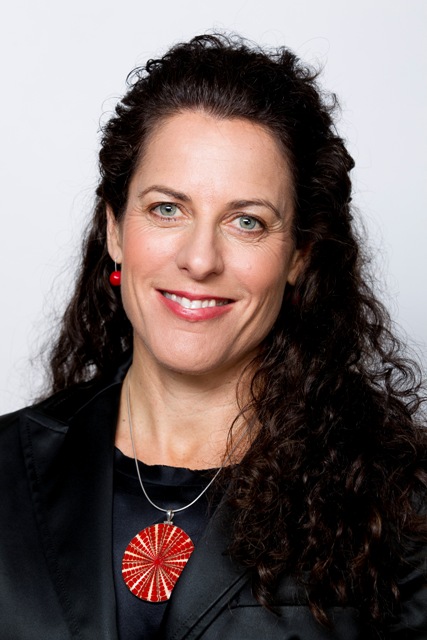
Green Building Council of Australia and Bilgola SLSC President Romilly Madew
2018 Green Globe Award finalists
Finalists for 2018 awards
Built Environment Award
CRC for Low Carbon Living
Fujitsu Australia: Driving Energy Transparency in Data Centres
Mirvac: Bay Centre 6 Stars
Business Leadership Award
AccorHotels: Planet 21 in Action
Splendour in the Grass
Sydney Markets: Sydney Markets Sustainability Leaders
Tonic Lane: The Mug Movement
Climate Change Leadership Award
3 Council Program - Randwick, Waverley and Woollahra Councils: Solar my School
ClearSky Solar Investments
Climate Council of Australia: Cities Power Partnership
Community Leadership Award
ClearSky Solar Investments
COREM: Community-Owned Renewable Energy Mullimbimby
Positive Change for Marine Life: Honour the Ocean
The Social Outfit: Sustainable Fashion with a Difference!
Innovation Award
ClearSky Solar Investments
Newcastle City Council: Summerhill Solar Farm
Plastic Forests: Unique Plastic Film Recycler
Woolpack Australia: Woolcool
Natural Environment Award
Australian Museum: Australian Museum FrogID Project
Greater Sydney Local Land Services/Oceanwatch Australia: Living Shorelines
Lord Howe Island Board: Lord Howe Island Weed Eradication Project
Public Sector Leadership Award
Hornsby Shire Council: Hawkesbury Watch
Randwick City Council: Sustaining our City Program
University of Technology Sydney
Resource Efficiency Award
Auburn Hospital: Think Before You Bin It
Blantyre Farms
Kindershare
Responsible Cafes
Sustainability Champion Award
Rob James: Direct Group Industries
Dr Tein McDonald: Australian Association of Bush Regenerators
Romilly Madew: Green Building Council of Australia
Ed Maher: Charles Sturt University
Jackie Ruddock: The Social Outfit
Young Sustainability Champion Award
Angelina Arora: School Student
Arlian Ecker: Plastic Free Boy
Anika Molesworth: Climate Wise Agriculture
Charlotte Rose Mellis: VOPO Earth
10 Year Sustainability Achievement Award
Crystal Creek Meadows
Mirvac
Stockland

Green Building Council of Australia and Bilgola SLSC President Romilly Madew
Rainfall Welcomed But Not Drought Breaking
7 September, 2018: NSW DPIThe NSW Department of Primary Industries (DPI) has today released the latest State Seasonal Update, which indicates NSW received welcome widespread rainfall throughout August; however 99.8 per cent of NSW remains in drought.
DPI’s Leader of Climate Applications and Digital Agriculture, Dr Anthony Clark said the recent rainfall is a positive start but totals were still average to very much below average across most of the state and drought conditions continue to be experienced.
“Significant falls occurred for parts of the Central Tablelands, North Coast, Northern Tablelands and a small area of the Western region around Bourke,” Dr Clark said.
“Reasonable falls were also recorded to the north of the South East region, the east of the Murray and Riverina regions as well as north of Singleton in the Hunter region.”
While August rainfall has provided a more positive outlook for NSW primary producers, there are still areas of ongoing concern and the forecast from the Bureau of Meteorology currently points to a higher chance of warm, dry conditions in spring.
“Parts of the state had minimal rainfall throughout August including much of the Western region, the western area of the Central West region, the area around Walgett in the North West region and areas south of Singleton in the Hunter received little to no rainfall,” Dr Clark said.
“These areas have been managing drought conditions for some time now, with the event duration now near, or in some cases, over twelve months.
“While the rain has been welcomed and has provided a more positive outlook for field conditions in some regions, the drought is far from over.
“We need more significant widespread rainfall in the coming weeks and months for agricultural recovery to commence and farmland to return to a productive state, however if the forecasted conditions eventuate we would see an increased intensification of the drought.”
The NSW Department of Primary Industries (DPI) and Local Land Services will continue to monitor the seasonal conditions closely.
For more information visit, www.droughthub.nsw.gov.au
Mine Dust Crackdown In Hunter Valley
September 6, 2018: NSW EPAA crackdown on coal mine dust has been launched in the Hunter Valley, to ensure mines comply with strict operating conditions.
“Operation Dust Patrol is underway, and inspectors from the Environment Protection Authority are on the alert,” Environment Minister Gabrielle Upton said.
“All mines operate under strict licensing conditions and they are required to minimise dust levels. Making sure mines do this is a priority for the NSW Government.
“The strict operating conditions are there to protect and safeguard the community and the environment and any mine that does not properly control its dust can face fines of up to $1 million.
“People living near mines should be protected by tough regulations and mine operators have a duty at law to improve their environmental performance.”
During Operation Dust Patrol EPA Officers will inspect mines to check that, in addition to best practice dust controls, extra precautions are in place on days when there is a higher risk of dust, Ms Upton said.
“In particular, mines must take extra care during harsh dry weather conditions to prevent dust affecting the surrounding communities.
“The current dry drought conditions, especially on windy days, mean that mines should be taking extra precautions to control the amount of dust generated on site.
“These precautions could include not transporting or dumping as much earth, watering exposed stockpiles, delaying blasting until calmer weather or ceasing operations altogether.
“If mines are caught out breaching regulations or not taking extra care on windy days, the EPA will take action,” she said.
Koalas In NSW Are Losing Their Homes
They’re losing their homes to excessive tree-clearing and if we don’t act soon, koalas could be extinct in NSW as early as 2050. Due to weakened laws, tree-clearing has tripled in the past two years, resulting in the destruction of the homes of more than 240 native species.
Sign the petition: https://wwfau.org/2NUAaLP
Koalas Get 2000 Hectares Of Safety
September 1st, 2018: NSW Environment, The Hon. Minister Gabrielle UptonNearly 2000 hectares will be added to NSW's conservation estate to fulfil its pledge to protect the longer-term future of the State's iconic koala population.
Environment Minister Gabrielle Upton said these additions will not only be a great help for koala conservation on the north coast of New South Wales, but for other threatened species.
"Some 1382 hectares of the Mount Boss State Forest near Wauchope will be transferred to National Parks and Wildlife Service (NPWS) management to become known as the Kindee Creek State Conservation Area," she said.
"Kindee Creek is not only habitat for koalas, but for also for about 30 threatened species including Masked and Sooty owls, the Glossy-black cockatoo, and a number of threatened micro bats.
"What makes this addition especially valuable is that it helps bridge a gap between the relatively well represented coastal conservation reserves and mountain habitats with the mid-elevation foothills country," Ms Upton said.
The other transfer is some 590 hectares of the Oakes State Forest to be added to Gumbaynggirr National Park, 35 kilometres west of Nambucca Heads.
"This addition is known koala habitat, some of which is high quality. It contains several koala records and there are many more in close proximity. Regionally this location is regarded as significant for koalas.
"As well as koalas the addition protects habitat for some 15 threatened species such as the Powerful owl, Sphagnum frog and the Wompoo dove," Ms Upton said.
The transfers are part of the statewide $45 million koala strategy announced in May, which includes the outright purchase of new lands as well as additions of state forest lands to the conservation estate.
The Koala strategy includes the creation of around 24,000 hectares of new koala parks and reserves, Ms Upton said.
"In all, an additional 43,600 hectares will be managed for conservation outcomes in New South Wales.
Schools Spectacular 2018
By NSW Department of Education
In its 35 years, the Schools Spectacular has showcased talented performers from every corner of the state.This year it boasts a featured performer from Norfolk Island Central School – 1,700 kilometres east of Sydney across the Pacific Ocean.
Talented singer Arki Nobbs, who is studying for his HSC, joins a cast 20-times the size of the 285 students enrolled at the island’s only school.
The theme for this year’s Schools Spectacular is ‘The Greatest’ and for Arki everything about it is simply huge.
An audience of around 10,000 – five times the population of Norfolk – will pack Qudos Bank Arena for each of the four performances and the surrounds of the Olympic Park precinct would swallow his five-by-eight-kilometre island.
But the biggest thing is the opportunity being part of Schools Spectacular offers Arki.
He has only concentrated on singing for a few years since a recording artist visiting from the mainland for workshops at the school heard him singing in a backroom.
Now he will be featured in the entertainment extravaganza that in 2016 was named the Guinness World Record for the Largest Amateur Variety Act in the world.
Schools Spectacular Creative Director Sonja Sjolander is confident that this year’s 35th Schools Spectacular will live up to its name: The Greatest.
“This year’s show is shaping up to be one of the best yet,” Ms Sjolander said. “We have found some of the greatest talent around and can’t wait to show it to the world.”
Arki will be joined by dozens of featured performers from across the state.
They include veterans like Burwood Girls High’s Ruby Hawken, who returns for her seventh Schools Spectacular, and Jared Smith of Sydney Boys High, Newtown High School of the Performing Arts singer Arlo smith and Soraya Zapata of Wollongong High School of the Performing Arts who will each notch up their fifth Spec.
Brother and sister Olina and Ezra Loau of Bossley Park High return for another year.
This year’s youngest featured performer is Jazmin Castle who is in Year 4 at Wagga Wagga’s Turvey Park Public School.
Other featured performers are drawn from across the Sydney metropolitan area, Ulladulla, Alstonville, Orange, Newcastle, Winmalee, Kiama and Grafton.
Schools Spectacular will be staged at matinee and evening performances at Qudos Bank Arena on 23 and 24 November.
We believe:That every child has a talent that should be celebratedThat it is a mixture of fun, creativity and unity that inspires confidenceThat every performer and supporter is part of our collective successIt is these beliefs that create life-changing experiences for all
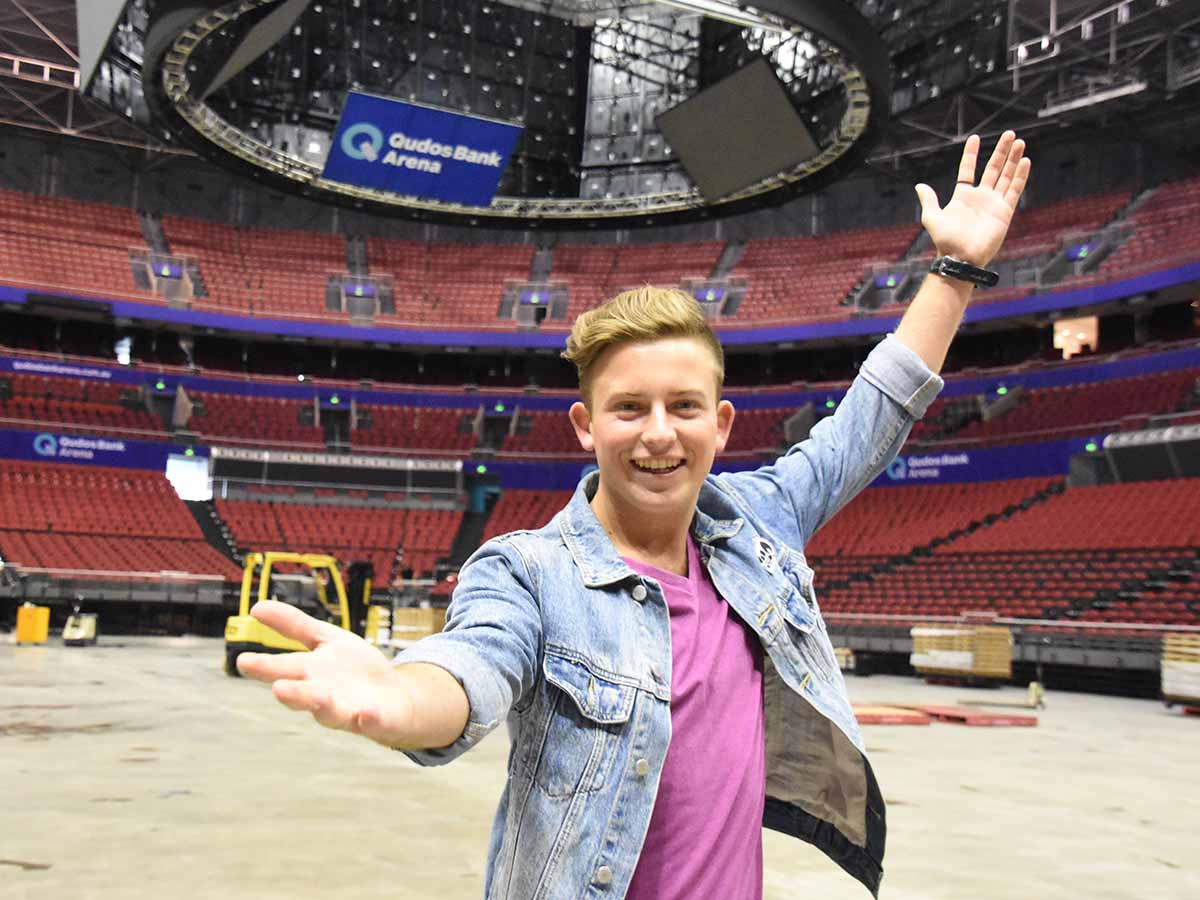
Arki Nobbs in rehearsal for the Schools Spectacular. © State of New South Wales (Department of Education), 2018.

Surfing NSW Announces New Board Members And Staff Structure
Thursday, September 6, 2018
Surfing NSW is delighted to announce its new staff and Board of Director’s structure.
Surfing NSW has appointed a new General Manager and a second female director to its six-member board.
Former World Championship Tour surfer John Shimooka has been appointed to the position of General Manager of Surfing NSW.
“I’m extremely honoured to take the reigns as the new GM of Surfing NSW,” said Shimooka. “Being a part of such an amazing group of talented individuals in an organisation that continues to create multiple pathways to the podium. I’m looking forward to being involved in all forms of surfing in events, programs, and brand partners space.”
Lyndel Gray, CEO of Caravan Camping Industry Association NSW is the latest addition to the Surfing NSW Board Of Directors. Lyndel has a wealth of experience in tourism and leisure industries and was formerly the CEO of Tourism NSW. Prior to that, she headed up Tourism Australia’s Americas operations for 14 years.
Gray will join CEO of Women in Banking and Finance Jen Dalitz as the second female on the newly structured board that also includes Chairman John O’Neill, Harry Hodge, Paul Chandler and Mark Windon.
Surfing NSW Chairman John O’Neill said the organisation continues to strengthen its board and management at a unique time in surfing’s history.
“We are looking to engage recreational surfers, the general public and non-surf brands like never before as our sport prepares for its first ever Olympic Games in 2020 and extends its reach via wave pools,” O’Neill said.
Surfing NSW CEO Luke Madden echoed similar sentiments.
“Moving towards the Olympic Games in 2020, Surfing NSW has taken all necessary steps to build our organisation to not only continue to cater to our core audience but also people who are just discovering the surfing lifestyle,” said Madden.
Surfing NSW has also recently appointed former Qualifying Series surfer Brittani Nicholl as Office and Education Coordinator.
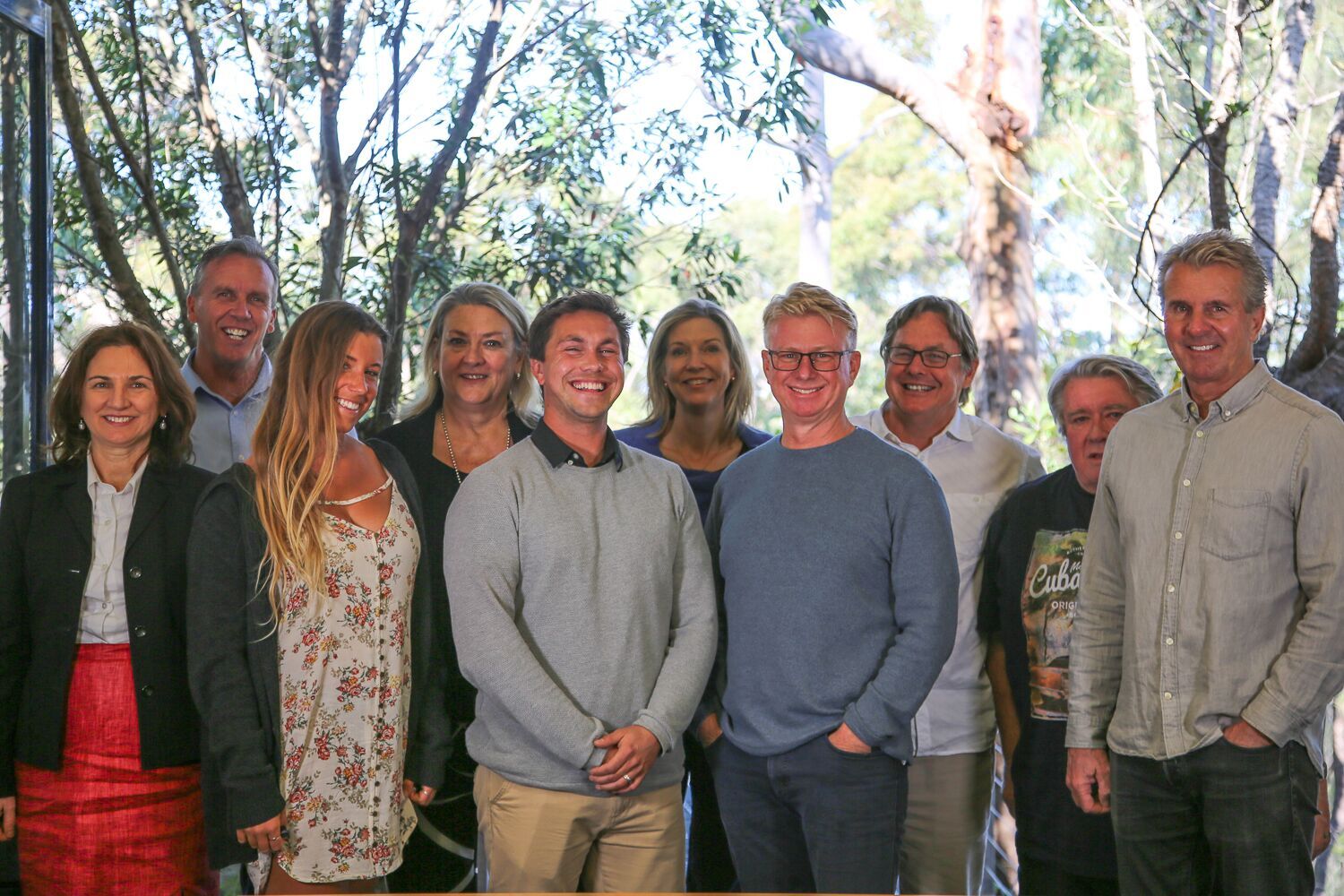
The Management Teams From Surf NSW and Surf Life Saving NSW came together ahead of the formal signing of an Historic MOU - visit this week's Aquatics feature. - photo Surfing NSW
About Surfing NSW:
Surfing NSW, established in 1963, is the largest and longest running of the recognised state bodies for the sport of surfing in Australia. In conjunction with nine regional associations, Surfing NSW is responsible for managing events, programs and education across the state from grassroots level events through to international professional events such as the Vissla NSW Pro Surf Series (WSL QS1000 series), Port Stephens NSW Toyota Pro (women's QS6000 and men's QS1000) and the Vissla Sydney Surf Pro (men's and women's WSL QS6000).
Visit surfingnsw.com.au for more information
Thursday, September 6, 2018
Surfing NSW is delighted to announce its new staff and Board of Director’s structure.
Surfing NSW has appointed a new General Manager and a second female director to its six-member board.
Former World Championship Tour surfer John Shimooka has been appointed to the position of General Manager of Surfing NSW.
“I’m extremely honoured to take the reigns as the new GM of Surfing NSW,” said Shimooka. “Being a part of such an amazing group of talented individuals in an organisation that continues to create multiple pathways to the podium. I’m looking forward to being involved in all forms of surfing in events, programs, and brand partners space.”
Lyndel Gray, CEO of Caravan Camping Industry Association NSW is the latest addition to the Surfing NSW Board Of Directors. Lyndel has a wealth of experience in tourism and leisure industries and was formerly the CEO of Tourism NSW. Prior to that, she headed up Tourism Australia’s Americas operations for 14 years.
Gray will join CEO of Women in Banking and Finance Jen Dalitz as the second female on the newly structured board that also includes Chairman John O’Neill, Harry Hodge, Paul Chandler and Mark Windon.
Surfing NSW Chairman John O’Neill said the organisation continues to strengthen its board and management at a unique time in surfing’s history.
“We are looking to engage recreational surfers, the general public and non-surf brands like never before as our sport prepares for its first ever Olympic Games in 2020 and extends its reach via wave pools,” O’Neill said.
Surfing NSW CEO Luke Madden echoed similar sentiments.
“Moving towards the Olympic Games in 2020, Surfing NSW has taken all necessary steps to build our organisation to not only continue to cater to our core audience but also people who are just discovering the surfing lifestyle,” said Madden.
Surfing NSW has also recently appointed former Qualifying Series surfer Brittani Nicholl as Office and Education Coordinator.

The Management Teams From Surf NSW and Surf Life Saving NSW came together ahead of the formal signing of an Historic MOU - visit this week's Aquatics feature. - photo Surfing NSW
About Surfing NSW:
Surfing NSW, established in 1963, is the largest and longest running of the recognised state bodies for the sport of surfing in Australia. In conjunction with nine regional associations, Surfing NSW is responsible for managing events, programs and education across the state from grassroots level events through to international professional events such as the Vissla NSW Pro Surf Series (WSL QS1000 series), Port Stephens NSW Toyota Pro (women's QS6000 and men's QS1000) and the Vissla Sydney Surf Pro (men's and women's WSL QS6000).
Visit surfingnsw.com.au for more information
Fletcher’s Drumsticks
by NSW National Parks and Wildlife Service
Mandatory Health Insurance For Overseas Visitors
ACCC Takes Action Against Hearing Aid Retailers For Misleading Pensioners
- In order to obtain a free hearing aid pensioners had to book a free hearing test at an AudioClinic or HearingLife hearing clinic before the deadline in the advertisement, when in fact there is no deadline to obtain a fully-subsidised hearing aid under the Hearing Program.
- The free hearing aids included wireless technology that would allow users to connect them to digital devices like televisions and mobile phones, when in fact this technology was not included with the free hearing aid, but instead required additional accessories which were sold separately at an extra cost.
- Any user of the advertised hearing aid would no longer miss any conversations, when in fact this may depend on a person’s individual circumstances and the nature of his or her hearing impairment.

Public Consultation Open For Draft Single Charter Of Aged Care Rights
Dementia Symptoms Peak In Winter And Spring, Study Finds
Tackling Elder Abuse
Toxic Chemical In Some Weight Loss Products
More Support For Children Living With Type 1 Diabetes
September 4th, 2018: The Hon Greg Hunt MP, Minister for Health
The Australian Government will invest $6 million to better support children living with diabetes, with the launch of a new program across Australian schools.
The Type 1 Diabetes Management in Schools program will support around 6,000 children living with the condition by providing a training and education program for teachers on the management of children with type 1 diabetes.
It will give parents peace of mind that their children with type 1 diabetes are better supported in managing their condition while at school.
Teachers and school staff will be trained in insulin administration, recognition of hypoglycaemia and normalising diabetes management in schools.
Type 1 diabetes is an autoimmune disease attacking a person’s ability to produce insulin and it is vitally important that children and young people with the disease are monitored throughout the day.
In 2015, more than 6,000 children aged 0-14 years had type 1 diabetes.
The program will be designed and delivered by Diabetes Australia, through the National Diabetes Services Scheme, supported by an alliance of the key national health professional and consumer diabetes organisations.
The organisations are the Australian Diabetes Educators Association, the Australasian Paediatric Endocrine Group, Diabetes Australia, the Australian Diabetes Society and JDRF Australia.
These groups will consult with other key stakeholders on the final design and implementation of the program.
This builds on the Coalition Government’s $54 million initiative for free continuous glucose monitoring devices.
The National Diabetes Services Scheme is Commonwealth funded initiative that supports timely, reliable and affordable access to products and services that help people with diabetes effectively self-manage their condition.
The Type 1 Diabetes Management in Schools program supports one of the Australian National Diabetes Strategy goals to promote awareness of type 1 diabetes symptoms and management in schools, other educational settings, workplaces and the community more broadly.
This program complements the Asthma in Schools program announced by the Government in January.
It is part of our ongoing commitment to ensuring children with chronic conditions are able to receive appropriate care if they need it at school.
$9 Million Boost For Youth Mental Health
September 5th, 2018: The Hon Greg Hunt MP, Minister for Health
The Australian Government will invest $9 million to boost mental health support for young Australians through Orygen’s National Centre of Excellence in Youth Mental Health.
The funding will support Orygen work in delivering more research to support better services and treatment for young people, as well as the development of new clinical services, education and training.
Giving greater support to young Australians with a mental health illness is a priority of the Federal Government.
We will also provide $660,000 to support development of a new National University Mental Health Framework to protect students’ mental health.
The framework will provide guidelines and standards to help all Australian universities to create positive learning environments which prevent mental health issues and poor education outcomes.
It will also strengthen connections between universities and community mental health services in relation to care and treatment for students who do experience mental illness.
While the framework will be voluntary, all universities will be encouraged to adopt it to reduce the number of students who drop out or get poor results mainly due to psychological distress or mental illness.
It will help to increase the awareness of mental health issues in all universities, improve their responses to mental ill-health, and make it easier for students to seek help and receive early intervention.
Orygen’s 2017 report on the mental health of Australian university students reported that at least one in four students aged between 15 and 24 experienced mental ill-health in any given year, resulting in social and economic costs to the community and the education and health systems.
The Federal Government has funded Orygen since 2014 to operate the National Centre of Excellence in Youth Mental Health.
We are also contributing $5 million to complete work on building Orygen’s new integrated health care and transitional research facility in Melbourne. The new facility will increase Orygen’s capacity to turn research evidence into better mental health treatment and prevention.
Improving mental health services is a key pillar of the Government’s long term national health reform plan and today’s announcement builds on the Government’s record levels of investment in mental health, including an additional $338 million announced in the 2018-19 Budget.
Key Differences Between The Exercise-Trained Heart And Failing Heart
$12 Million To Combat Prostate Cancer
- stop prostate cancer progressing to advanced, more deadly stages; and
- improve treatments and life expectancy for men with advanced prostate cancer.
Telescope Maps Cosmic Rays In Large And Small Magellanic Clouds
